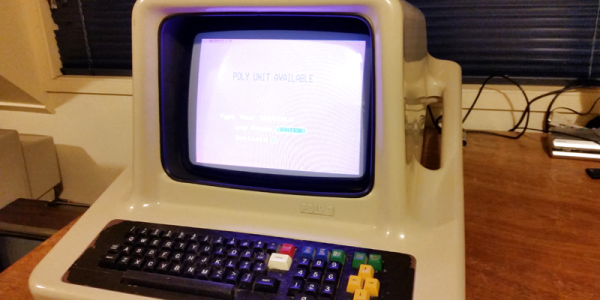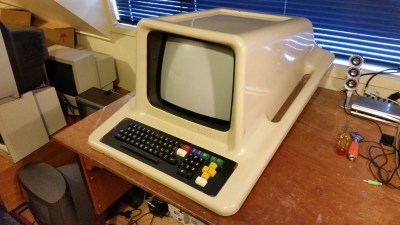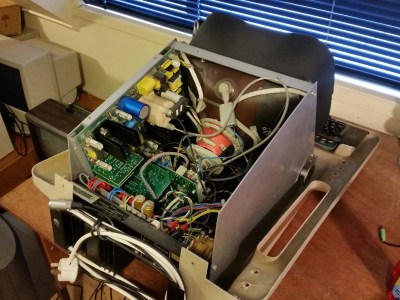1980s American teenagers, if they were lucky enough to attend a school with a computer lab, would have sat down in front of Apple IIs or maybe Commodore VIC20s. Similarly, their British cousins had BBC Micros. Solid and educational machines with all sorts of wholesome software, which of course the kids absolutely preferred to run in preference to playing computer games.
New Zealanders, at least a few of them, had the Poly-1. A footnote in the 8-bit microcomputer story, this was a home-grown computer with a built-in monitor clad in a futuristic one-piece plastic shell. Non-Kiwis never had the chance to encounter its 6809 processor and 64k of RAM, the global computer business being too great a challenge for a small New Zealand technology company, especially one whose government support had evaporated.
Decades after the end of Poly-1 production, some survive in the hands of enthusiasts. [Terry Stewart] has two of them, and has posted details of how he brought life back to one that was dead on arrival. It’s a story first of a failed electrolytic capacitor and tricky-to-dismantle PSU design, then of an almost-working computer whose random crashes were eventually traced to a faulty RAM chip. It seems swapping out that quantity of DIL RAM chips is rather tedious, and of course it had to be the final chip in the final bank that exhibited the problem.
Meanwhile it’s interesting to see the design of this unusual machine. A linear power supply contrasts with the switcher you’d have found in an Apple II at the time, and the motherboard is a huge affair. it’s easy to see why this was a relatively expensive machine.
We brought you [Terry]’s first Poly-1 last year, but so far he’s the only owner whose machine we’ve seen. More mainstream 8-bit machines are a common sight here, so for something else a bit esoteric read our coverage of home computers behind the Iron Curtain, and its companion piece on peripherals behind the Iron Curtain.
[via Hacker News]














